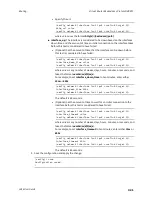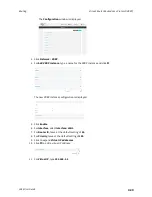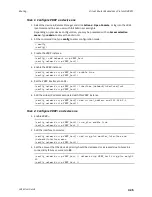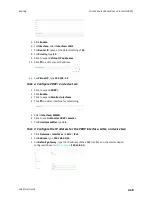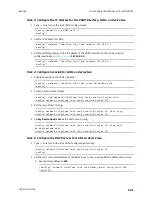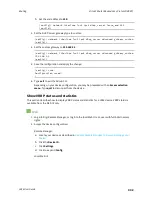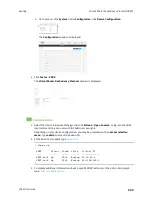
Routing
Virtual Router Redundancy Protocol (VRRP)
LR54 User Guide
418
2. At the command line, type
config
to enter configuration mode:
> config
(config)>
3. Create a new VRRP instance, or edit an existing one. See
for information about
creating a new VRRP instance.
4. Enable VRRP+:
(config)> network vrrp VRRP_test vrrp_plus enable true
(config)>
5. Add interfaces to monitor. Generally, this will be a cellular or WAN interface.
a. Use the
?
to determine available interfaces:
(config)> network vrrp test interface ?
Interface: The network interface.
Format:
/network/interface/defaultip
/network/interface/defaultlinklocal
/network/interface/lan1
/network/interface/lan_hotspot
/network/interface/loopback
/network/interface/wan1
/network/interface/wwan
Current value:
(config)> network vrrp test interface
b. Set the interface, for example:
(config)> add network vrrp VRRP_test vrrp_plus monitor_interface end
/network/interface/wwan
(config)>
c. (Optional) Repeat for additional interfaces.
6. Set the amount that the device's priority should be decreased or increased due to SureLink
connectivity failure or success:
(config)> network vrrp VRRP_test vrrp_plus weight
value
(config)>
where
value
is an integer between
1
and
254
. The default is
10
.
Along with the priority settings for devices in this VRRP pool, the amount entered here should
be large enough to automatically demote a master device when SureLink connectivity fails. For
example, if the VRRP master device has a priority of
100
and the backup device has a priority
of
80
, then
weight
should be set to an amount greater than
20
so that if SureLink fails on the
master, it will lower its priority to below
80
, and the backup device will assume the master
role.


















